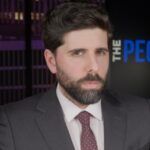
Scientists at the Lewis Katz School of Medicine have found a potential cure for patients infected with HIV.
Scientists at the Temple University school published a study in the Nature journal earlier this month showing that they can now effectively completely remove the virus from the DNA of human cells.
Medicalxpress.com reports:

BYPASS THE CENSORS
Sign up to get unfiltered news delivered straight to your inbox.
You can unsubscribe any time. By subscribing you agree to our Terms of Use
According to senior investigator on the new study, Kamel Khalili, PhD, Laura H. Carnell Professor and Chair of the Department of Neuroscience, Director of the Center for Neurovirology, and Director of the Comprehensive NeuroAIDS Center at the Lewis Katz School of Medicine at Temple University (LKSOM), “Antiretroviral drugs are very good at controlling HIV infection. But patients on antiretroviral therapy who stop taking the drugs suffer a rapid rebound in HIV replication.” The presence of numerous copies of HIV weakens the immune system and eventually causes acquired immune deficiency syndrome, or AIDS.
Curing HIV/AIDS—which has claimed the lives of more than 25 million people since it was first discovered in the 1980s – is the ultimate goal in HIV research. But eliminating the virus after it has become integrated into CD4+ T-cells, the cells primarily infected with HIV, has proven difficult. Recent attempts have focused on intentionally reactivating HIV, aiming to stimulate a robust immune response capable of eradicating the virus from infected cells. However, to date, none of these “shock and kill” approaches has been successful.
Dr. Khalili and colleagues decided to try a different approach, specifically targeting HIV-1 proviral DNA (the integrated viral genome) using uniquely tailored gene editing technology. Their system includes a guide RNA that specifically locates HIV-1 DNA in the T-cell genome, and a nuclease enzyme, which cuts the strands of T-cell DNA. Once the nuclease has edited out the HIV-1 DNA sequence, the loose ends of the genome are reunited by the cell’s own DNA repair machinery.
In previous work, Dr. Khalili’s team had demonstrated the ability of their technology to snip out HIV-1 DNA from human cell lines. In their latest study, however, they concentrated on latently and productively infected CD4+ T cells to show not only that the technology eliminates the virus from cells but also that its persistent presence in HIV-1-eradicated cells actually protects them against reinfection. More importantly, they carried their work over to ex vivo experiments, in which T-cells from patients infected with HIV were grown in cell culture, showing that treatment with the gene editing system can suppress viral replication and dramatically reduce viral load in patient cells.
In another major component of the study, Dr. Khalili’s team addressed questions about off-target effects and toxicity. Using an approach known as ultra-deep whole-genome sequencing, which is considered the gold standard for genomic assessment, the researchers analyzed the genomes of HIV-1-eradicated cells for mutations in genes outside the region targeted by the guide RNA. Their analyses ruled out off-target effects on genes, including potential collateral effects on cellular gene expression. Studies of cell viability and proliferation showed that HIV-1-eradicated cells were growing and functioning normally.
“The findings are important on multiple levels,” Dr. Khalili said. “They demonstrate the effectiveness of our gene editing system in eliminating HIV from the DNA of CD4 T-cells and, by introducing mutations into the viral genome, permanently inactivating its replication. Further, they show that the system can protect cells from reinfection and that the technology is safe for the cells, with no toxic effects.”
“These experiments had not been performed previously to this extent,” he added. “But the questions they address are critical, and the results allow us to move ahead with this technology.”

